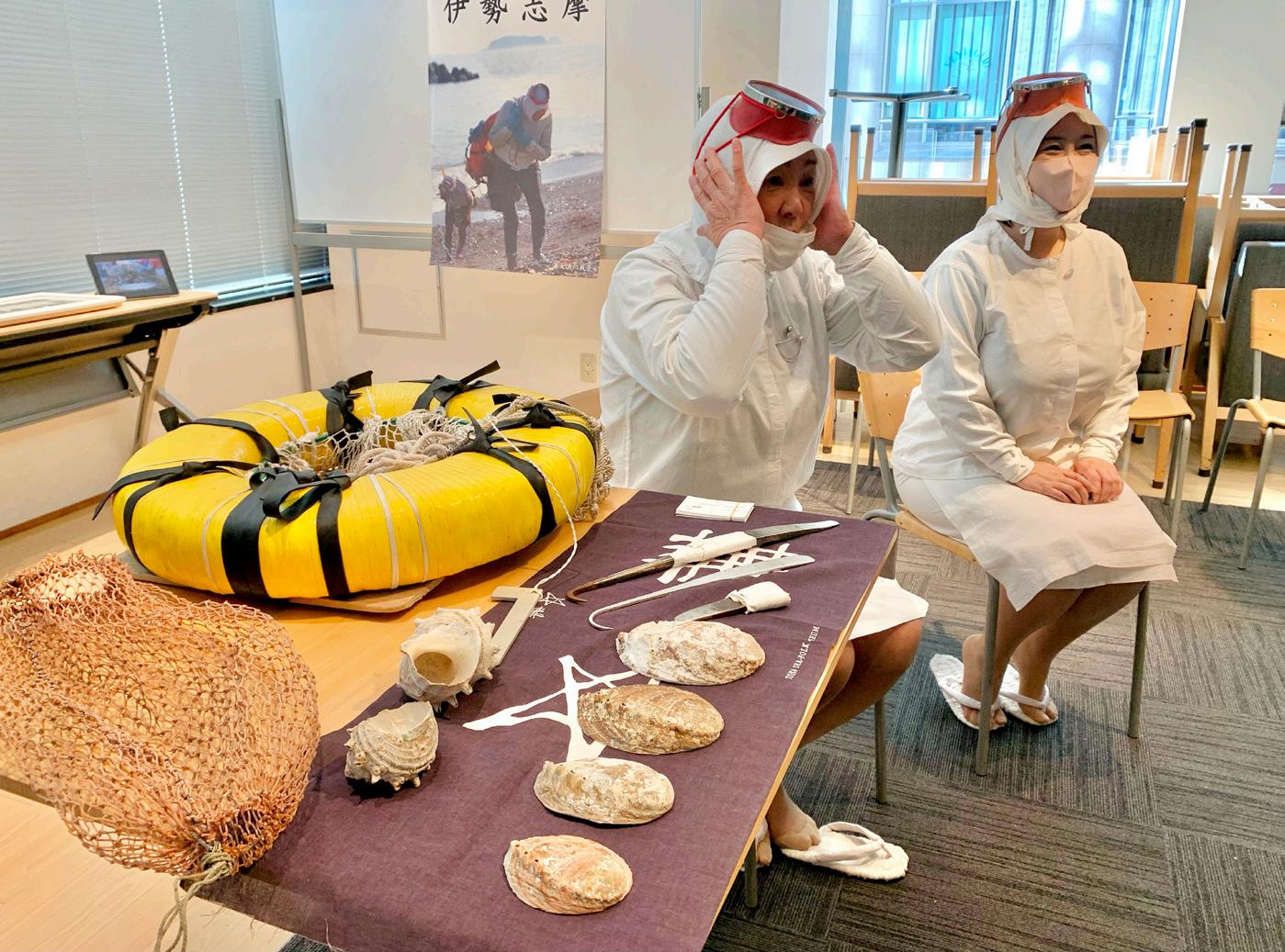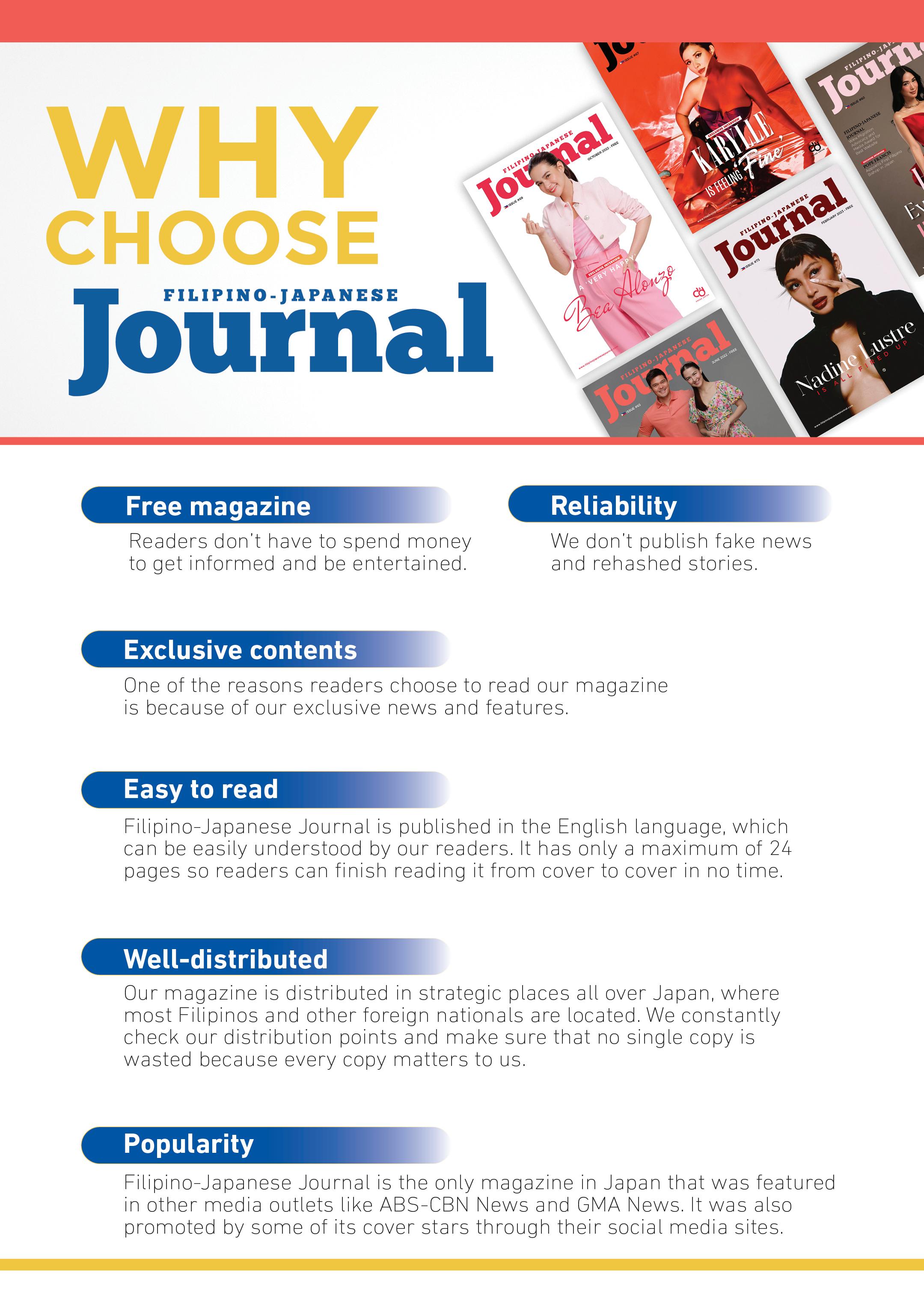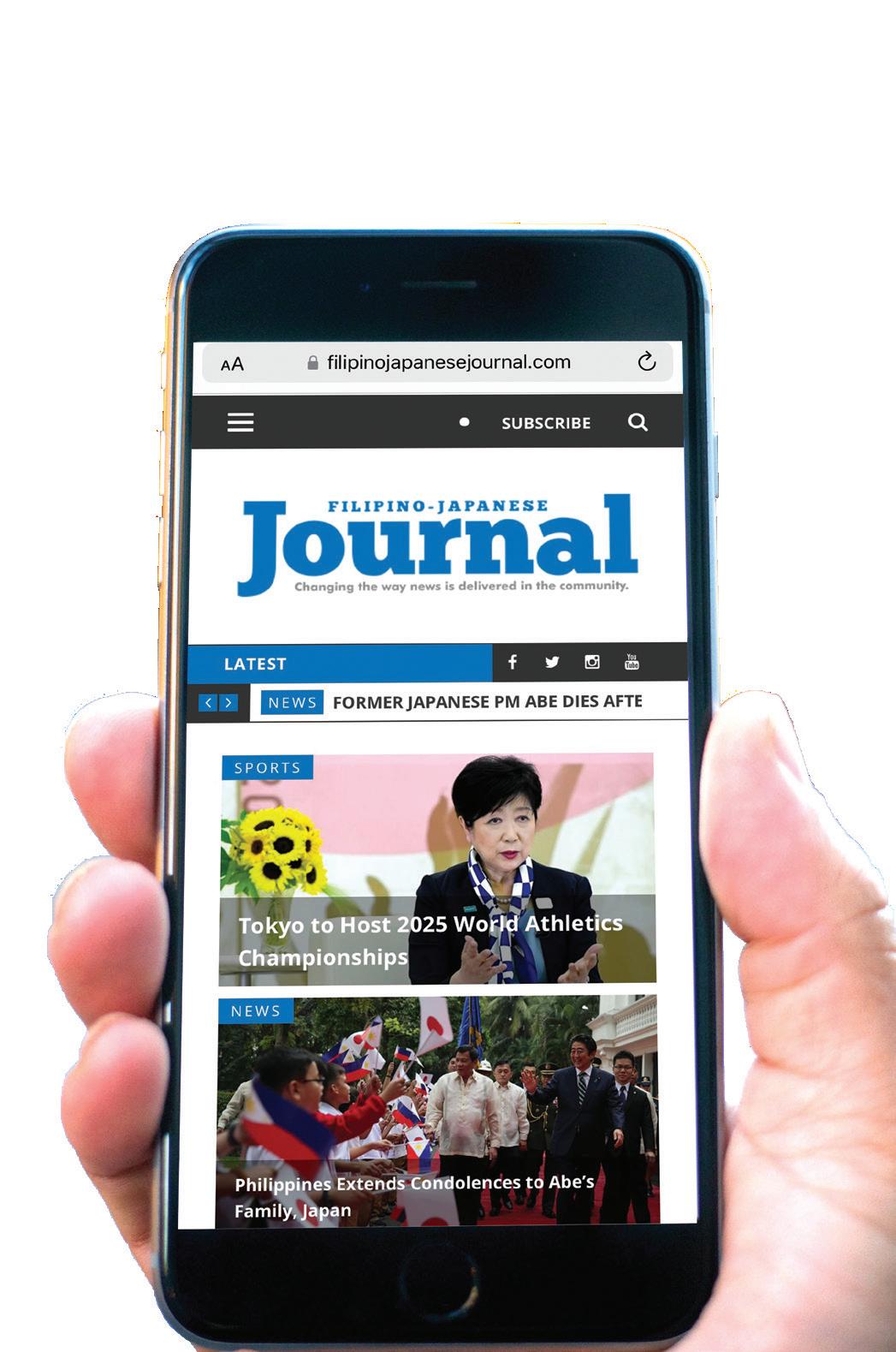
1 minute read
Mie Prefecture’s ‘Ama’ Divers: Upholding Tradition Amid Challenges
BY FLORENDA CORPUZ & LEN ARMEA
“I believe that the work of the ama divers is incredible, and I want to continue doing it,” stated Kaori Arai, 39, who has been free-diving for the past decade.
Advertisement
Fishing Methods and Restrictions
Ama divers are of two types: the “funado” who works with a boatman, commonly her husband, called “tomae;” and the “kachido” who works alone. Their diving depths range from three to 20 meters, and they can hold their breath underwater for up to 50 seconds.
To preserve marine life, ama divers adhere to strict regulations, and one of them is not harvesting abalone smaller than 10.6 centimeters.
Outfits and Tools
Over time, the attire of ama divers evolved from wearing nothing to wearing white loincloths and wetsuits to protect themselves from the cold. They now also use various equipment, such as goggles, chisels, ring floats, lifelines, beach towels, and fins, to aid them in their diving activities.
Religious Beliefs
Each fishing season, ama divers hold festivals to honor the sea god and pray for their safety and abundant fishing. These festivals are a vital part of the their diving tradition and reflect the close relationship between the ama divers and the ocean.
In addition to the festivals, ama divers also wear talisman symbols to protect themselves from the ocean’s bad spirits.
Ama free-diving is a challenging activity that exposes female divers to the dangers of the sea, but that’s not all. They also have to battle the harsh cold temperatures that come with diving in freezing waters. To counter this, they use fire pits called “kamado,” a traditional Japanese stove placed at the center of their huts to warm up the ama divers before and after their dives.
Resilient Ama Diving Culture Facing Environmental Challenges
Despite practicing their traditional fishing techniques for thousands of years, the ama divers in Mie Prefecture are facing significant challenges as a result of climate change and an aging population.
73-year-old Machiyo Yamashita, a 48-year veteran of the profession, has witnessed firsthand the decline in seaweed and abalone populations due to changing environmental conditions. However, despite these obstacles, Yamashita and her fellow ama divers in Shima City remain determined to maintain their way of life and preserve their unique cultural heritage.
In recognition of its cultural significance, Japan is seeking to have the ama diving culture included on the UNESCO Intangible Cultural Heritage list.
*This article was originally published in our July 2017 issue. Additional information, photos and minor edits have been made by the editor.


















